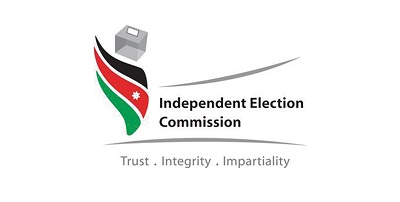
Since its inception, Jordan has been an aid beneficiary country. Yet aid ebbs and flows — it is never steady or secure enough to enable forward planning or strategic thinking. What is more, for several decades now, the government has relegated funding for capital expenditures (spending on projects that enhance productivity and invest in the future of the country) to foreign aid. Some aid sources seem to be drying up, leaving us to question: Where do we go now?
According to the World Bank Database, Jordan received $48 billion in foreign aid (grants and soft loans) during the period 1960-2020. The US alone gave Jordan $20 million since 1951, and recently increased the aid package from $1.275 billion to $1.45 billion for the next seven years. The UK, Germany, and Japan are also among Jordan’s main aid benefactors, and Saudi Arabia gave Jordan $1.175 billion since 1978, 50 percent of which went to support the budget.
Accumulating debtsThe vast majority (over 90 percent) of foreign aid has been directed towards government budget support. Moreover, during the 2010–2014 period, 70 percent of aid was in the form of grants, while the remainder comprised soft loans.
Currently, only half of aid is in the form of grants, which means that debt servicing is growing year after year. Hence, the economy (as measured by GDP) needs to grow at a faster rate than the interest on the debt.
The vast majority (over 90 percent) of foreign aid has been directed towards government budget support.
Last year, debt servicing in Jordan totaled $2.22 billion, or 20 percent of domestic revenues (government domestic collections in taxes and fees from the local economy). However, some of the debt servicing goes out of the country — it is leaked out of the economy, thus weakening economic growth.
Moreover, if one were to add spending in the budget on debt servicing, civil service salaries, military and security apparatus allocations, and pensions, it would result in a sum greater than domestic revenues, which means that the government has to borrow to meet some (not even all) of its current expenditures.
Sinking productivityThis also means that it has to come up with these sums every month or year to meet its obligations, and it has no fiscal maneuverability. As a result, scant resources in the budget are ever dedicated to new projects, ones that enhance productivity, and when such projects are mentioned, they are subject to financing from aid.
The productivity in Jordan has been declining over the past 40 years; and the average income of a Jordanian has declined by $1,218
Consequently, productivity in Jordan has been falling for decades. The highest per-capitaincome in real terms (with inflation taken out) in the history of Jordan was $5,055, in 1982. It was $3,837 in 2021.
In other words, the productivity in Jordan has been declining over the past 40 years; and the average income of a Jordanian has declined by $1,218. It is no wonder that 70 percent of respondents to a recent survey stated they do not trust the government and folks are generally unhappy.
Again, where do we go now? The short answer is that we need the type of government spending that enhances the productivity of Jordanians to increase their output and income, and thus that of the government. If interested in a long response, see one of my past articles on the topic as I have answered this question many times.
Latest News
 'Sinwar Above Ground': Hamas official's revelation shocks Israeli Occupation
'Sinwar Above Ground': Hamas official's revelation shocks Israeli Occupation US president signs bill to provide new aid for Ukraine
US president signs bill to provide new aid for Ukraine Prime minister directs government to support IEC ahead of upcoming elections
Prime minister directs government to support IEC ahead of upcoming elections Parliamentary elections for 20th Lower House to be held on September 10 – IEC
Parliamentary elections for 20th Lower House to be held on September 10 – IEC Amman Chamber of Commerce says GDP grows by 4.4% in 2023
Amman Chamber of Commerce says GDP grows by 4.4% in 2023
Most Read Articles
- More than 100 arrested at US university pro-Palestinian protests
- Irish foreign minister visits Palestinian refugee camp in Amman, vows support to UNRWA
- King, French president discuss regional developments
- Senior Hamas official says movement is “awaiting response” in ceasefire negotiations
- Jordan remembers Queen Zein
- Ahead of feared Rafah invasion, Palestinians mourn bombardment dead
- US says downed Houthi anti-ship missile, four drones
- Sharing the tech wealth - By Diane Coyle, The Jordan Times
- JAF carries out six more airdrops of aid into Gaza
- Jordan completes human rights review before council’s evaluation Jordan completes human rights review before council’s evaluation